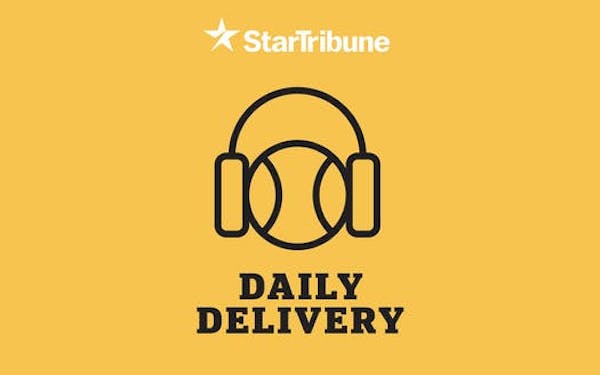 See
more of the story
See
more of the story
The Twins' first home opener was played 60 years ago, on April 21, 1961. Minnesotans were very excited about this, although not enough to sell out the large erector set in Bloomington.
The turnstile count was 24,606, close to 6,000 below Met Stadium's initial major league capacity.
Twins owner Calvin Griffith celebrated the event by saying he was "disappointed by the size of the crowd," as well as the result:
The expansion Washington Senators that had replaced Calvin's Senators in D.C., winning 5-3 behind stout pitching from Joe McClain.
It wasn't the record that dissuaded customers, since the Twins came home from a three-city road trip to the Bronx, Baltimore and Boston at 5-1, with one rainout and one snow-out.
It wasn't the weather, as the temperature on the cloudy, breezy day reached the low 60s. More likely, it was just the sticker shock of big-league prices for Minnesotans, including some choice seats going for as much as $4.
Baseball commerce was a far different beast when we first reached the big leagues. Consider: The Yankees, coming off another World Series, with Maris and Mantle and the rest, had a crowd of 14,607 for their home opener vs. the Twins on April 11.
As mind-blowing as are those economic long-term changes, the approach to playing the game has changed more in the past seven or eight years than it did in the previous 50-plus.
The Twins were home in Target Field on Thursday after a 4-2 start in Milwaukee and Detroit. Attendance was limited to 10,000 due to COVID restrictions, or it would have been another of the now-traditional opener sellouts in the 40,000 range.
What was startling to someone who was a 15-year-old in the stands on that afternoon 60 Aprils earlier was this:
Six games into the season, the Twins showed up with 14 pitchers on a 26-player roster.
Nine relievers, three bench players. In what baseball universe does that make sense? MLB's in 2021, obviously.
What came to mind was the pennant race in the 10-team American League in 1967. There were five teams changing places throughout the summer in what's still known as "The Great Race."
The Twins played 164 games, with two official ties. They played 11 extra-inning games, including 18 innings in the second game of a doubleheader that started in New York on July 26 (W) and 20 innings vs. Washington on Aug. 9 (L) at Met Stadium.
Placing a runner on second base in the hope of quickly breaking a tie wasn't even a consideration for a 20th inning.
Amid this marathon, the Twins used 12 pitchers — all season. Dwight Siebler pitched 3⅓ innings and Mel Nelson one-third of an inning in September. Jim Roland and Jim Ollom, a pair of young lefties, traded off as the ninth pitcher for most of the summer and split 70⅔ innings.
That left 1,386⅔ innings to be divided among starters Dean Chance, Dave Boswell, Jim Kaat and Jim Merritt, spot starters/relievers Jim Perry and Mudcat Grant, and relievers Al Worthington and Ron Kline.
Kaat had been on a tremendous roll, his left elbow popped early on the last day of the season in Fenway Park, and the Twins lost the pennant to Boston's "Impossible Dream."
The Twins of 2021 had totaled 54⅔ innings on the opening road trip. The two losses came in 10-inning games with the runner-on-second rule, a popular carry-over to many fans from the 2020 mini-season.
And when Brent Rooker was too sore to play Wednesday in Detroit, the Twins put him on the injured list and added Brandon Waddell as a 14th pitcher. Presumably, they will go back to 13 on Monday if Josh Donaldson comes off the injured list as planned.
Manager Rocco Baldelli's first season was in 2019, and the Twins actually played a fraction more innings — 1,463⅓ — than in 1967. They also used 30 pitchers (plus Ehire Adrianza for one inning) compared with the dozen during The Great Race.
There is no greater reason for the huge increase in strikeouts and the stultifying pace of play than the sheer number of pitchers teams are willing to throw at hitters.
Most of the endless supply of relievers come with at least one special pitch and a unique plan for every hitter.
That's why explosions such as the Twins managed against Seattle's lefty starter, Marco Gonzales, in Thursday's opening 10-2 victory are to be appreciated:
A cascade of rockets featuring gigantic home runs from the on-fire Byron Buxton and the potentially revived Mitch Garver.
The only downer in having 9,675 fans back was the bumpkins starting in on an "MVP" chant for Buxton on April 9. Please, go back to St. Paul, shout that at Kirill Kaprizov, and leave us alone until at least June with that at Target Field.





